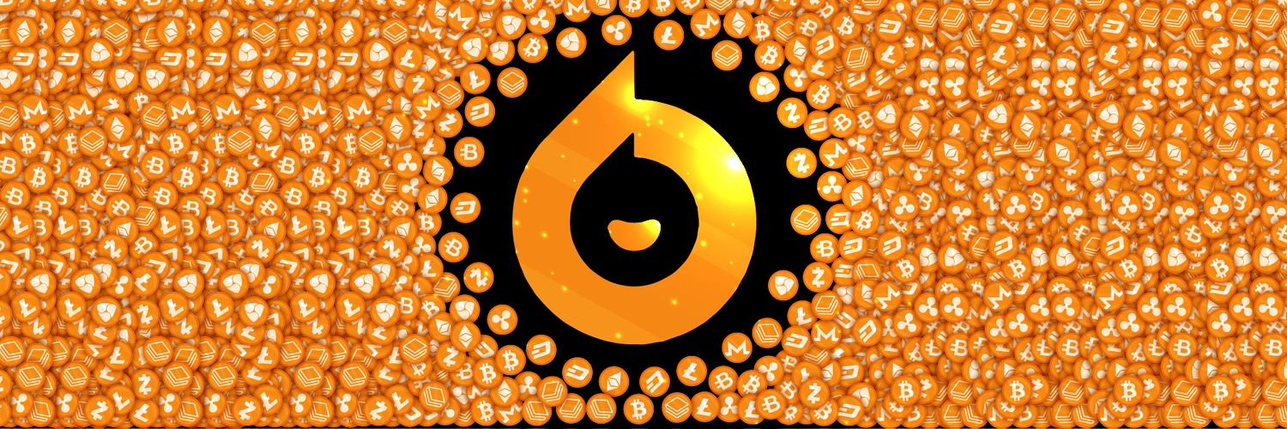Bitget:全球日交易量排名前 4!
BTC 市占率63.37%
Bitget 新幣上架 : Pi Network
BTC/USDT$94630.11 (+1.45%)恐懼與貪婪指數65(貪婪)
山寨季指數:0(比特幣季)
盤前交易幣種SIGN比特幣現貨 ETF 總淨流量:+$380M(1 天);+$3.14B(7 天)。Bitget 新用戶立享 6,200 USDT 歡迎禮包!立即領取
到 Bitget App 隨時隨地輕鬆交易!立即下載
Bitget:全球日交易量排名前 4!
BTC 市占率63.37%
Bitget 新幣上架 : Pi Network
BTC/USDT$94630.11 (+1.45%)恐懼與貪婪指數65(貪婪)
山寨季指數:0(比特幣季)
盤前交易幣種SIGN比特幣現貨 ETF 總淨流量:+$380M(1 天);+$3.14B(7 天)。Bitget 新用戶立享 6,200 USDT 歡迎禮包!立即領取
到 Bitget App 隨時隨地輕鬆交易!立即下載
Bitget:全球日交易量排名前 4!
BTC 市占率63.37%
Bitget 新幣上架 : Pi Network
BTC/USDT$94630.11 (+1.45%)恐懼與貪婪指數65(貪婪)
山寨季指數:0(比特幣季)
盤前交易幣種SIGN比特幣現貨 ETF 總淨流量:+$380M(1 天);+$3.14B(7 天)。Bitget 新用戶立享 6,200 USDT 歡迎禮包!立即領取
到 Bitget App 隨時隨地輕鬆交易!立即下載



Meme Network 價格MEME
未上架
報價幣種:
TWD
數據來源於第三方提供商。本頁面和提供的資訊不為任何特定的加密貨幣提供背書。想要交易已上架幣種? 點擊此處
NT$0.{4}9374-5.04%1D
價格圖表
Meme Network價格走勢圖 (MEME/TWD)
最近更新時間 2025-04-26 05:46:04(UTC+0)
市值:--
完全稀釋市值:--
24 小時交易額:--
24 小時交易額/市值:0.00%
24 小時最高價:NT$0.{4}9607
24 小時最低價:NT$0.{4}8839
歷史最高價:NT$0.001967
歷史最低價:NT$0.{4}8292
流通量:-- MEME
總發行量:
8,127,893,823MEME
流通率:0.00%
最大發行量:
--MEME
以 BTC 計價:0.{10}3041 BTC
以 ETH 計價:0.{8}1603 ETH
以 BTC 市值計價:
--
以 ETH 市值計價:
--
合約:
ibc/67...173D4CA(Cosmos)
您今天對 Meme Network 感覺如何?
注意:此資訊僅供參考。
Meme Network (MEME) 簡介
了解Meme Network Token的關鍵資訊
Meme Network Token,是一種在區塊鏈技術基礎上發展的虛擬貨幣,專注於提供一個深度社區驅動的內容創作和交流平台。他們的目標是讓用戶之間能夠在平等和自由的基礎上進行信息交流,同時讓創作者能夠從中獲得足夠的利益。以下是對Meme Network Token一些重要特徵的深入了解。
社區驅動
Meme Network Token致力於創建一個由社區驅動的平台,這意味著Meme Network Token的使用者並非只是被動地接收訊息,而是能夠積極參與,使得整個網絡更加活躍和自治。這種模式不僅能夠增加用戶的參與度,還能借用社區的力量,把平台做得更好。
內容創作者友好
Meme Network Token對於內容創作者非常友善。他們能夠在平等和自由的環境中創作,同時能夠從中獲得相對應的報酬。這種模式在很大程度上鼓勵了創作者的創作熱情,使得平台的內容更加豐富和多元。
去中心化
Meme Network Token基於區塊鏈技術,具有近乎完美的去中心化特性。這種模式讓每一個用戶都能夠直接參與到平台的決策中,無論是對於平台的發展方向,還是對於內容的審核都有一定的發言權。這也增加了平台的透明度和公正性。
安全和可靠
Meme Network Token的區塊鏈基礎技術保證了其安全性和可靠性。每一筆交易都會被記錄在區塊鏈上,保證了資料的不可篡改性。此外,使用區塊鏈技術還能防止雙重支付等問題的出現。
Meme Network Token,作為一種突破性的虛擬貨幣,正在以其獨特的特性和優勢,不斷吸引著更多的用戶和創作者的加入。未來,它將在虛擬貨幣的領域中扮演更大的角色。
Meme Network 的 AI 分析報告
今日加密市場熱點查看報告
今日Meme Network即時價格TWD
今日Meme Network即時價格為 NT$0.{4}9374 TWD,目前市值為 NT$0.00。過去 24 小時內,Meme Network價格跌幅為 5.04%,24 小時交易量為 NT$0.00。MEME/TWD(Meme Network兌換TWD)兌換率即時更新。
Meme Network價格歷史(TWD)
過去一年,Meme Network價格上漲了 -87.35%。在此期間,兌TWD 的最高價格為 NT$0.001644,兌TWD 的最低價格為 NT$0.{4}8292。
時間漲跌幅(%) 最低價
最低價 最高價
最高價 
 最低價
最低價 最高價
最高價 
24h-5.04%NT$0.{4}8839NT$0.{4}9607
7d+1.00%NT$0.{4}8815NT$0.0001063
30d-13.62%NT$0.{4}8292NT$0.0001260
90d-51.83%NT$0.{4}8292NT$0.0002685
1y-87.35%NT$0.{4}8292NT$0.001644
全部時間-86.98%NT$0.{4}8292(2025-04-16, 10 天前 )NT$0.001967(2023-10-27, 1 年前 )
Meme Network的最高價格是多少?
Meme Network兌換TWD的歷史最高價(ATH)為 NT$0.001967,發生於 2023-10-27。相較於價格回撤了 95.24%。
Meme Network的最低價格是多少?
Meme Network兌換TWD的歷史最低價(ATL)為 NT$0.{4}8292,發生於 2025-04-16。相較於Meme Network歷史最低價,目前Meme Network價格上漲了 13.06%。
Meme Network價格預測
MEME 在 2026 的價格是多少?
根據MEME的歷史價格表現預測模型,預計MEME的價格將在 2026 達到 NT$0.0001053。
MEME 在 2031 的價格是多少?
2031,MEME的價格預計將上漲 +29.00%。 到 2031 底,預計MEME的價格將達到 NT$0.0002136,累計投資報酬率為 +135.88%。
常見問題
Meme Network 的目前價格是多少?
Meme Network 的即時價格為 NT$0(MEME/TWD),目前市值為 NT$0 TWD。由於加密貨幣市場全天候不間斷交易,Meme Network 的價格經常波動。您可以在 Bitget 上查看 Meme Network 的市場價格及其歷史數據。
Meme Network 的 24 小時交易量是多少?
在最近 24 小時內,Meme Network 的交易量為 NT$0.00。
Meme Network 的歷史最高價是多少?
Meme Network 的歷史最高價是 NT$0.001967。這個歷史最高價是 Meme Network 自推出以來的最高價。
我可以在 Bitget 上購買 Meme Network 嗎?
可以,Meme Network 目前在 Bitget 的中心化交易平台上可用。如需更詳細的說明,請查看我們很有幫助的 如何購買 指南。
我可以透過投資 Meme Network 獲得穩定的收入嗎?
當然,Bitget 推出了一個 機器人交易平台,其提供智能交易機器人,可以自動執行您的交易,幫您賺取收益。
我在哪裡能以最低的費用購買 Meme Network?
Bitget提供行業領先的交易費用和市場深度,以確保交易者能够從投資中獲利。 您可通過 Bitget 交易所交易。
Meme Network持幣
Meme Network持幣分布矩陣
Meme Network持幣分布集中度
巨鯨
投資者
散戶
Meme Network地址持有時長分布
長期持幣者
游資
交易者
coinInfo.name(12)即時價格表

全球Meme Network價格
目前Meme Network用其他貨幣計價是多少?最近更新時間:2025-04-26 05:46:04(UTC+0)
MEME 兌換 MXN
Mexican Peso
Mex$0MEME 兌換 GTQGuatemalan Quetzal
Q0MEME 兌換 CLPChilean Peso
CLP$0MEME 兌換 HNLHonduran Lempira
L0MEME 兌換 UGXUgandan Shilling
Sh0.01MEME 兌換 ZARSouth African Rand
R0MEME 兌換 TNDTunisian Dinar
د.ت0MEME 兌換 IQDIraqi Dinar
ع.د0MEME 兌換 TWDNew Taiwan Dollar
NT$0MEME 兌換 RSDSerbian Dinar
дин.0MEME 兌換 DOPDominican Peso
RD$0MEME 兌換 MYRMalaysian Ringgit
RM0MEME 兌換 GELGeorgian Lari
₾0MEME 兌換 UYUUruguayan Peso
$0MEME 兌換 MADMoroccan Dirham
د.م.0MEME 兌換 AZNAzerbaijani Manat
₼0MEME 兌換 OMROmani Rial
ر.ع.0MEME 兌換 KESKenyan Shilling
Sh0MEME 兌換 SEKSwedish Krona
kr0MEME 兌換 UAHUkrainian Hryvnia
₴0- 1
- 2
- 3
- 4
- 5
購買其他幣種
在哪裡可以購買加密貨幣?
影片部分 - 快速認證、快速交易

如何在 Bitget 完成身分認證以防範詐騙
1. 登入您的 Bitget 帳戶。
2. 如果您是 Bitget 的新用戶,請觀看我們的教學,以了解如何建立帳戶。
3. 將滑鼠移到您的個人頭像上,點擊「未認證」,然後點擊「認證」。
4. 選擇您簽發的國家或地區和證件類型,然後根據指示進行操作。
5. 根據您的偏好,選擇「手機認證」或「電腦認證」。
6. 填寫您的詳細資訊,提交身分證影本,並拍攝一張自拍照。
7. 提交申請後,身分認證就完成了!
加密貨幣投資(包括透過 Bitget 線上購買 Meme Network)具有市場風險。Bitget 為您提供購買 Meme Network 的簡便方式,並且盡最大努力讓用戶充分了解我們在交易所提供的每種加密貨幣。但是,我們不對您購買 Meme Network 可能產生的結果負責。此頁面和其包含的任何資訊均不代表對任何特定加密貨幣的背書認可,任何價格數據均採集自公開互聯網,不被視為來自Bitget的買賣要約。
Meme Network評級
社群的平均評分
4.6
此內容僅供參考。
Bitget 觀點
kabeer0500
20分鐘前
Which Blockchain Offers the Most Opportunities in Crypto today?
As the crypto market evolves, opportunities are emerging across various blockchains. But the real question is: which blockchain currently offers the best potential for growth, investment, and innovation in Web3?
1. Ethereum – The King of Smart Contracts
Ethereum remains the go-to network for DeFi, NFTs, and dApps. Its vast ecosystem and developer activity make it a solid long-term bet. However, high gas fees can be a barrier for new users, pushing many toward Layer 2 solutions.
2. Solana – Fast Transactions and Low Fees
Solana has become a hotspot for both serious builders and memecoin traders. Its lightning-fast transactions and low fees attract users seeking quick gains. The recent meme coin season has made Solana a goldmine for early adopters.
3. BNB Chain – User-Friendly and Scalable
BNB Chain continues to be a favorite for retail users, offering a wide range of projects with easy onboarding. From trading to staking and NFTs, it’s a versatile network that still offers plenty of yield and launchpad opportunities.
4. Base – Coinbase's Scalable Ecosystem
Base is gaining traction fast, powered by the Coinbase brand. Its low-fee structure and ease of integration with Web2 users make it attractive for early-stage builders. Many promising projects are launching here, providing early access for sharp-eyed investors.
5. Arbitrum & Optimism – Ethereum Layer 2 Gems
For those who want Ethereum-level security and ecosystem without the high fees, Arbitrum and Optimism are ideal. These Layer 2s offer growing DeFi ecosystems, frequent airdrops, and hidden gems for early DeFi participants.
Each blockchain has its strengths. For long-term holders and builders, Ethereum and its Layer 2s remain solid. For degen traders and risk-takers, Solana and Base offer faster-paced opportunities. Whatever your style, the key is research, timing, and managing your risk.
GAS-0.51%
BNB+0.30%

Nilesh Rohilla | Analyst
3小時前
#ALTS MARKET MOMENTUM: 🚨
#AI AND #MEME TOKEN IN MOMENTUM..
SEEMS AGAIN AI AND MEME WILL LEAD RALLY..
BOTH SECTOR ARE MOST DUMP IN LAST 4 MONTH..
MEME-0.53%

Bpay-News
3小時前
Dialogue
Backpack CEO: Everything is a Meme, Bitcoin is always the ultimate value
BITCOIN-0.04%
MEME-0.53%

Coinedition
4小時前
Shiba Inu Approaches Critical Resistance Zone With 537 Trillion SHIB at Stake
Shiba Inu (SHIB) has reached a major milestone in its price movement, as recent market momentum pushes the popular meme token toward a critical resistance level that could determine its short-term fate. Following a 4% increase, SHIB is currently trading at approximately $0.0000140 and is moving closer to a formidable barrier that has historically prevented further upside.
On-chain data from IntoTheBlock reveals a dense resistance zone between $0.000014 and $0.000017. This is where over 141,000 addresses currently hold more than 537 trillion SHIB tokens. This massive concentration is one of the largest clusters of out-of-the-money holders. These are investors who purchased SHIB at a higher price and currently wait for a return on investment.
If Shiba Inu is unable to overcome this obstacle, selling pressure will rise as underwater holders take the opportunity to close out their positions at smaller losses. Despite this obstacle, SHIB technical analysis shows encouraging indications of gathering momentum. The token has just crossed the 50-day Exponential Moving Average (EMA) and the psychologically important $0.000013 level, which had been working as resistance.
Also in favor of the bullish argument is the consistent rise in trading volume, which indicates that the current trend is not speculative-driven but reflects genuine buying interest. The Relative Strength Index (RSI) is currently at 66, which is near the overbought zone of 70 and indicates a bullish trend.
But if it cannot break the $0.000014 resistance level, the token will fall back to the support level of $0.0000125 to $0.0000130. This is an area that has repeatedly served as a critical point between buyers and sellers in recent months.
Related: Shiba Inu (SHIB) Eyes $0.0001: Key Factors Fueling Bullish Forecast
While Shiba Inu’s market structure has been improving, the 537 trillion SHIB barrier is a substantial obstacle that cannot be easily overcome. Bulls will need major momentum to break through this resistance. This likely requires support from overall market strength or positive developments specific to the Shiba Inu ecosystem.
Market participants should closely monitor trading volumes and whale activity as SHIB approaches this critical level. Increased institutional interest or large whale accumulation could provide the necessary momentum to overcome the resistance.
Disclaimer: The information presented in this article is for informational and educational purposes only. The article does not constitute financial advice or advice of any kind. Coin Edition is not responsible for any losses incurred as a result of the utilization of content, products, or services mentioned. Readers are advised to exercise caution before taking any action related to the company.
NEAR+2.82%
MAJOR+1.33%

Bestquality28
6小時前
Meme coins are back? $PEPE & $DOGE on fire!🔥
$PEPE2 is up over 30% in the last 24 hous.
$DOGE is moving too.
Is this beginning of a new meme coin bull run?
Check the charts and get ready--meme season might be making a comeback!
#memecoin #PEPE #DOGE #CryptoTrends #BitgetInsight
DOGE+2.23%
PEPE2+3.50%
相關資產
相近市值
在所有 Bitget 資產中,這8種資產的市值最接近 Meme Network。
關於Meme Network的更多資訊

































